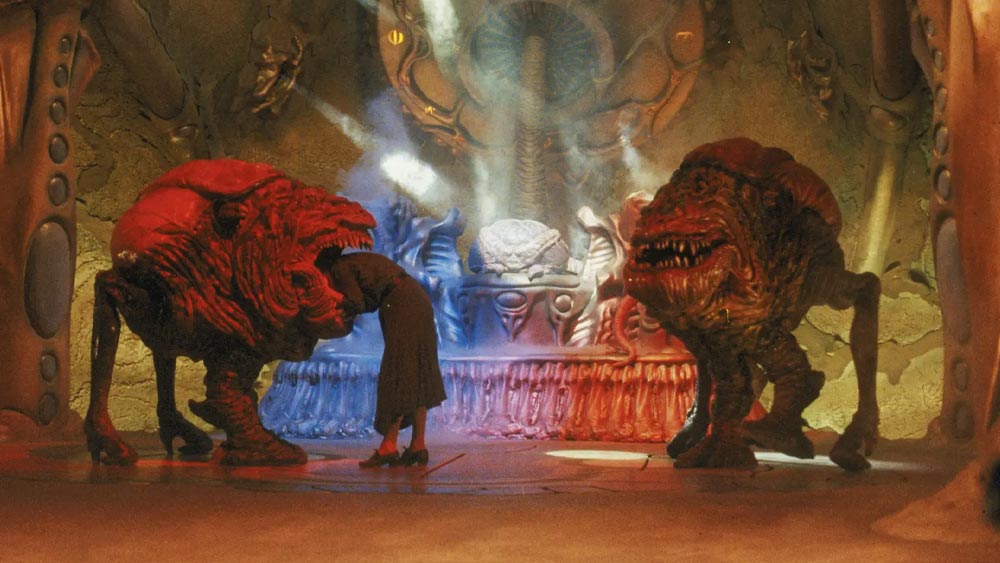Tobe Hooper’s Invaders from Mars (1986) is a movie with big knockoff energy, neither at all original nor apparently even interested in seeming so. As such, it’s unusually endearing. A pitiable outlier in its era’s sub-genre of remade sci-fi Cold War allegories, including Philip Kaufman’s Invasion of the Body Snatchers (1978) and John Carpenter’s The Thing (1982), it’s also plainly beholden to the adventures of wide-eyed Wonderbread moppets popularized by Steven Spielberg (who oversaw Hooper’s biggest hit, Poltergeist, in 1982). What’s fascinating here is how hard it is to know if Hooper’s way of going through Spielbergian motions constitutes sincere homage, grim Faustian loan payback, or surly critique. Like its many characters overcome by sinister mind control, the film itself—with its drifting pace and aloofness of coverage and cutting—seems afflicted by a sort of tragic autopilot. Half the fun, and maybe all the tension, comes from hoping it will rally and turn out okay.
Fresh from the nightmare of a hostile spaceship touching down behind his house, a grade-schooler (Hunter Carson) finds most nearby adults under alien influence, and takes it upon himself to mobilize a U.S. military response. As one does. After all, it’s the ‘80s. “You’re not just a crazy child, are you?” asks the boy’s school nurse (Carson’s real-life mother, Karen Black–her husband, L.M. Kit Carson, co-wrote Texas Chainsaw Massacre 2 as his followup to the screenplay Paris, Texas), in a tone just weary enough to suggest she remains uncorrupted; soon, she’s by his side braving an underworld of malicious creatures both preposterous and grotesque. “Huge ugly slimy giant Mr. Potato Heads” is how the boy describes them. The film is a bit fuzzy on the invaders’ agenda, but that’s in keeping with its kid’s-eye view. Also, if there’s a plus side of being derivative, it might be freedom from the obligation to ask what things mean. Sure, there’s a red scare and a red planet, a conspiracy… whatever! We know that the truth will let out, that all hell will break loose, and that the effects made by maestro John Dykstra and creature designer Stan Winston—two of the era’s most influential luminaries, and this film’s real stars—will be worth the watch.
Which is not to discount the human presence. At least not entirely. Particularly in smaller roles, the Invaders from Mars casting is inspired. Bud Cort, years prior having set a generational tone by starring in Harold and Maude (1971), plays a SETI scientist whose grinning attempts at diplomacy get him vaporized; and Louise Fletcher, who won an Oscar as the caregiver-cum-villain in One Flew Over the Cuckoo’s Nest (1975), plays the schoolteacher who surely was evil even without the alien influence. And that’s the idea, right? That not-quiteness is sometimes the most frightening, or electrifying, or meaningful thing. That’s why Hooper was the right schlock-agnostic director for this job, and why, as perhaps the most willfully off-brand mainstream tentpole of its time, Invaders from Mars still holds up.
Invaders from Mars screens this afternoon, August 17, and on August 19, at the Museum of Modern Art on a 35mm print as part of the series “Tobe Hooper in the 1980s.”



